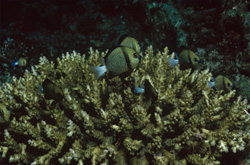Discover the Pacific Prussian Fish: A Fascinating Marine Species in the Eastern Pacific
The Pacific Prussian Fish is an extraordinary species native to the deep waters of the Eastern Pacific. With its distinctive body shape and vibrant colors, this fish is not only a crucial component of the marine ecosystem but also a fascinating subject for marine biologists and nature enthusiasts alike. Habitat: The Pacific Prussian Fish prefers coastal regions with abundant underwater vegetation, providing both shelter and food sources. Diet: As an opportunistic feeder, it consumes a variety of prey, including small fish, crustaceans, and mollusks. Behavior: This species is characterized by its social structures and complex communication methods used within their groups. Reproduction: The reproductive cycle of the Pacific Prussian Fish is closely linked to seasonal changes in the Pacific, with breeding seasons peaking during the warmer months. Adaptability: The Pacific Prussian Fish exhibits a remarkable ability to adapt to various environmental conditions, aiding its survival in the dynamic Pacific waters. Ecological Importance: As part of the food chain, it plays a vital role in maintaining the balance of the marine habitat by controlling populations of prey species and serving as a food source for larger predators. Research and Conservation: Due to its ecological significance and intriguing characteristics, the Pacific Prussian Fish is extensively studied by scientists to better understand its role in the ecosystem and to develop appropriate conservation strategies. Threats: Major threats to this species include overfishing, habitat loss, and the impacts of climate change, which can jeopardize their populations. Sustainability: Implementing sustainable fishery practices and protecting their natural habitats are essential to ensure the long-term survival of the Pacific Prussian Fish. Overall, the Pacific Prussian Fish is an integral part of the Pacific’s marine biodiversity, providing valuable insights into the complex interactions within this ecosystem.

